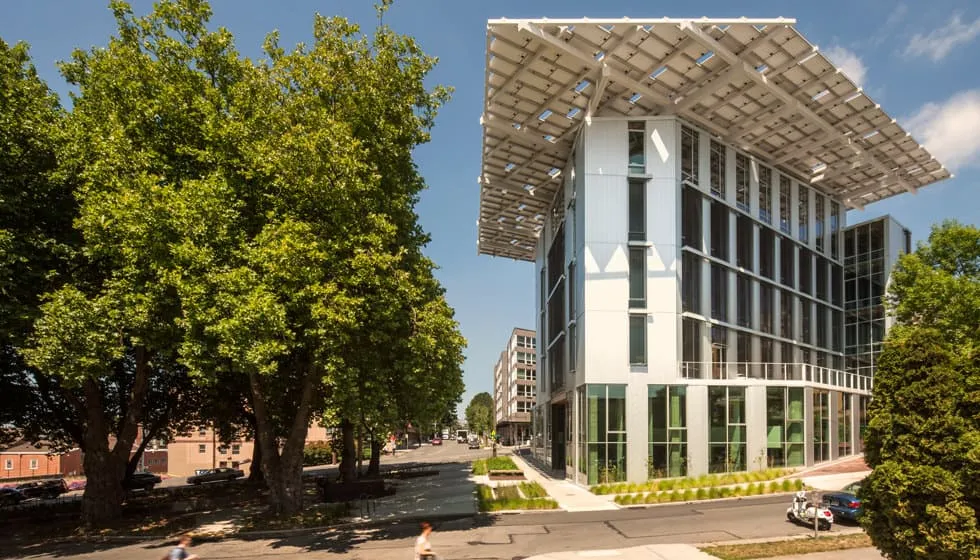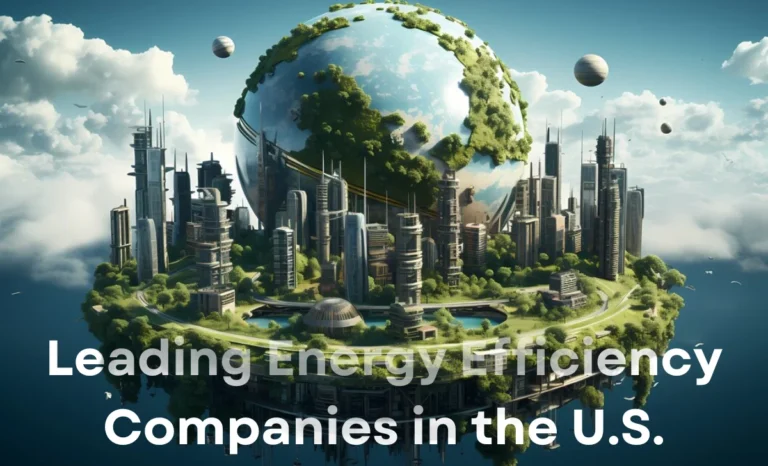In the 20th century, our predecessors were not as aware of the urgency and severity of the environmental issues we face today. Rising temperatures, extreme weather events, and loss of biodiversity are just a few examples of the consequences of inaction.The impact of climate change on our planet is becoming increasingly evident. Sustainable practices must be implemented in order to mitigate these effects and ensure a healthy future for generations to come. Failure to act now will only worsen the situation and lead to irreversible damage. It is imperative that we take action immediately.
The longer we wait, the more difficult it will be to reverse the damage that has been done. We must prioritize sustainability and conservation efforts in order to prevent further harm to our planet. The future of our environment depends on our actions today.
In this article
- 1 What is green engineering?
- 2 I. Understanding Green Engineering
- 3 II. Green Engineering’s Impact on Climate Change Mitigation
- 4 III. Key Green Engineering Practices and Strategies
- 5 IV. Real-World Examples and Case Studies
- 6 V. Green Engineering’s Challenges and Opportunities
- 7 VI. Future Trends and the Evolution of Green Engineering
What is green engineering?
Green engineering is the design of products, processes, and systems with environmental sustainability in mind. Green engineering seeks to reduce environmental impact throughout a product’s life cycle, from conception and production to use and disposal. This approach emphasizes efficiency, resource conservation, and the reduction of waste and pollutants.
Through integrated principles such as energy efficiency, renewable resource use, and life cycle assessment, green engineering is transforming how industries operate, guiding them toward practices that protect our nature while maintaining economic viability.
Ok, Which Purpose of this Article?
This article aims to guide you through the fundamental concepts of green engineering and demonstrate its important role in mitigating climate change, for example. Whether you are new to the field or want to deepen your understanding, you will receive clear explanations of key green engineering principles, real-world case studies that highlight successful applications, and practical strategies for incorporating sustainable practices into everyday operations. With a focus on actionable insights and a commitment to clarity, this article aims to equip you with the knowledge to make a meaningful contribution to a more sustainable future.
I. Understanding Green Engineering
Definition and Key Concepts
Green engineering is the design of products, processes, and systems that protect the environment and enhance quality of life, focusing on three key concepts, as per the expertise of my friends over the past decade.
- Sustainability: Creating solutions that meet the needs of today without compromising the ability of future generations to meet their own needs.
- Environmental efficiency: Maximizing an organization’s output or efficiency while minimizing its resource use and environmental footprint.
- Waste reduction: Designing processes that minimize or eliminate waste, ensuring that materials are used most efficiently from the start.
These principles assist engineers and designers in rethinking traditional methods, incorporating environmental considerations from the start rather than leaving them as an afterthought.
Historical Context and Evolution
The engineering world has historically prioritized efficiency and cost, neglecting environmental impacts. However, with climate change awareness, engineers began rethinking their approaches, leading to green engineering. This field emphasizes renewable energy, the circular economy, and sustainable design, recognizing long-term impacts on the planet and society. Green engineering will shape a sustainable future for generations.
Core Principles of Green Engineering

12 principles of green engineering that minimize environmental impacts while ensuring functionality and economic feasibility.
Design Through the 12 Principles of Green Engineering
- Waste Prevention: Design processes to minimize waste generation at the source, reducing the need for downstream treatment or disposal.
- Resource Efficiency: Optimize the use of raw materials and energy, ensuring that every resource is used to its fullest potential.
- Use of Renewable Inputs: Prioritize renewable materials and energy sources to support long-term sustainability.
- Inherently Safer Design: Develop products and processes that avoid or minimize the use and production of hazardous substances.
- Energy Efficiency: Focus on reducing energy consumption through smart design choices and the integration of renewable energy solutions.
- Design for Durability: Create long-lasting products to reduce the frequency of replacement and the associated environmental costs.
- Life-Cycle Thinking: Consider environmental impacts at every stage—from raw material extraction through production, use, and eventual disposal.
- Design for Reuse and Recycling: Engineer products so they can be easily disassembled, reused, or recycled, thereby extending their useful life.
- Integration of Environmental Considerations: Embed sustainability into every phase of the design process, ensuring that environmental impacts are a central focus from the start.
- System Optimization: Look at the bigger picture by integrating various system components, which often leads to more efficient and environmentally friendly solutions.
- Continuous Improvement: Embrace innovation and ongoing improvement to continually reduce environmental impacts over time.
- Stakeholder Collaboration: Engage with communities, industry partners, and regulators to ensure that sustainable practices are understood, adopted, and advanced collectively.
Green engineering principles are practical tools that drive innovations and reduce environmental footprints. By adhering to these guidelines, engineers and businesses can create effective and responsible solutions, ensuring progress doesn’t sacrifice future progress. Integrating these principles is critical for mitigating climate change and fostering economic and social well-being in a rapidly evolving world, ensuring progress doesn’t come at the expense of our future.
II. Green Engineering’s Impact on Climate Change Mitigation

Reducing Greenhouse Gas Emissions
- Over the past decade, I have witnessed how green engineering innovations have dramatically reduced greenhouse gas emissions across multiple industries.
- For instance, optimizing manufacturing methods and incorporating renewable energy sources in production lines not only cuts down direct emissions but also contributes to a cleaner energy mix overall.
- These improvements are pivotal because even small reductions in emissions at the industrial level can lead to significant environmental benefits on a global scale.
Enhancing Energy Efficiency
- A cornerstone of green engineering is enhancing energy efficiency.
- Integrating renewable energy sources—like solar or wind power—further complements these efforts, ensuring that the energy used is not only efficient but also sustainable.
- This dual focus on efficiency and renewable integration is essential for long-term climate change mitigation.
Minimizing Waste and Resource Consumption
- A cornerstone of green engineering is enhancing energy efficiency.
- Over my career, I’ve implemented strategies such as passive solar design in buildings, smart grid technologies in urban settings, and energy recovery systems in manufacturing.
- Each of these innovations not only reduces energy consumption but also lowers operational costs.
- Integrating renewable energy sources—like solar or wind power—further complements these efforts, ensuring that the energy used is not only efficient but also sustainable.
- This dual focus on efficiency and renewable integration is essential for long-term climate change mitigation.
Supporting Sustainable Infrastructure
- In urban planning, these principles guide the development of energy-efficient buildings, sustainable transportation networks, and resilient public utilities that can withstand the impacts of climate change.
- For example, smart urban designs incorporate green spaces, renewable energy installations, and water recycling systems that not only enhance quality of life but also reduce the overall carbon footprint of cities.
- In transportation, innovations such as electric vehicles and improved mass transit systems are the result of green engineering strategies that focus on reducing reliance on fossil fuels.
- By embedding these sustainable practices into the very fabric of our cities and industries, green engineering plays a pivotal role in fostering communities that are both resilient and adaptive to future climate challenges.
Green engineering is a strategy that addresses climate change by reducing emissions, improving energy efficiency, minimizing waste, and building sustainable infrastructure. It lays the groundwork for a healthier future and is essential for a more resilient and eco-friendly world, with continued evolution and adoption.
WMO | State of the Climate 2024 Update – Report
III. Key Green Engineering Practices and Strategies

Eco-Design and Product Lifecycle Management
Green engineering focuses on reducing the environmental impact of products and processes throughout their entire life cycle. Engineers evaluate the environmental impacts of materials used, energy consumption, and waste generation in order to make informed decisions that promote sustainability and minimize harm to the planet. This includes considering factors such as carbon emissions, water use, and resource depletion. This forward-thinking approach reduces resource consumption and minimizes negative impacts on the environment. This allows for a healthier planet for future generations.
Energy-efficient design techniques
Improving the energy efficiency of buildings and transportation systems, as well as the use of renewable energy sources. Through passive solar design, improved insulation, and smart energy system management. This helps reduce negative impacts on the environment. They are essential strategies for creating sustainable, efficient buildings and transportation systems. These techniques not only reduce operating costs, but also reduce greenhouse gas emissions and reliance on non-renewable energy sources. These techniques also contribute to a healthier and more sustainable future for everyone.
Renewable materials and recycling
Renewable materials and recycling can further contribute to the sustainability of buildings and transportation systems. This includes assessing the environment and identifying opportunities to reduce waste and increase resource efficiency. Recycling materials such as plastic, glass, and paper can help reduce the amount of waste sent to landfills. By reusing materials, the overall environmental impact of construction and transportation can be reduced. This can lead to significant cost savings for businesses and individuals.
Water and waste management
Water and waste management are key components of sustainable design. Proper management can help protect the environment and conserve valuable resources. In industrial settings, recycling and reusing materials can also help reduce costs. In addition, proper waste management can prevent pollution and groundwater contamination. It also promotes a positive public image for the company. It can also promote a positive public image for the company and attract environmentally conscious consumers. It will also appeal to environmentally conscious consumers.
Emerging Technologies
Green engineering is the advancement of technology that prioritizes environmental sustainability and efficiency. Furthermore, companies that adopt green engineering can benefit from cost savings in the long run. Incorporating carbon capture and storage technologies, renewable energy sources, and sustainable materials into their processes can help companies reduce their carbon footprint and contribute to a healthier planet. These practices will position companies at the forefront of sustainability and attract environmentally conscious consumers and investors.
Green engineering strategies address environmental challenges by integrating sustainable practices into the design and operation of products and systems. To grow by reducing environmental impact and promoting eco-friendly initiatives. To grow by reducing environmental impact and promoting eco-friendly initiatives, businesses must prioritize the use of renewable resources and minimize waste production.
IV. Real-World Examples and Case Studies

Green Engineering Success Stories
- Green Engineering has revolutionized the way that companies approach sustainability in their operations.
- In the construction sector, for example, green engineering has led to the development of more energy-efficient buildings and infrastructure.
- Many companies are now realizing the long-term cost savings and environmental benefits of implementing green engineering principles.
- The Bullitt Center in Seattle is an interesting example—it’s known for its advanced use of renewable energy, rainwater collecting systems, and sustainable materials, setting a standard for energy-efficient and ecologically responsible construction… and motivating others to follow suit.
- These approaches have improved transportation while also significantly reducing urban air pollution and greenhouse gas emissions.
- Meanwhile, in manufacturing, companies are redesigning production processes to be more resource-efficient.
- Some manufacturers have reduced waste generation by over 50% by integrating recycling systems and waste minimization strategies, thereby reducing production costs and environmental impact.
- This shift towards sustainable manufacturing practices is becoming increasingly important in today’s global economy.
Lessons Learned
The case studies emphasize the importance of incorporating sustainability in green engineering practices from the start, resulting in long-term benefits. Collaboration among engineers, designers, and stakeholders is crucial for overcoming challenges and fostering innovative solutions. Continuous monitoring and iterative improvements are also essential for project effectiveness and responsiveness to environmental demands. This approach ensures that projects remain adaptable and resilient in the face of changing conditions.
Impact on Climate Change Mitigation
- Quantifying the benefits of green engineering can be challenging, yet the environmental impacts are both measurable and significant.
- Energy-efficient designs in buildings have been shown to reduce energy consumption by up to 40%, directly cutting CO₂ emissions.
- In transportation, sustainable mobility solutions have led some cities to report a reduction of around 20% in urban greenhouse gas emissions over a few years.
- These examples clearly illustrate that green engineering is not only a viable path toward sustainable development but also a powerful tool in mitigating the effects of climate change.
- Drawing on over a decade of professional experience, I can attest that these real-world projects are laying the groundwork for a resilient and eco-friendly future.
V. Green Engineering’s Challenges and Opportunities

Economic and Regulatory Challenges
The economic and regulatory landscape is a complex and ever-changing environment that requires constant monitoring and adaptation. Green engineering projects must navigate these challenges in order to successfully contribute to a more sustainable world. Policy barriers and inconsistent regulations across some regions can hinder the progress of green engineering projects. Overcoming these obstacles often requires collaboration between stakeholders and policymakers. Effective communication and compromise between all parties involved is essential in order to find common ground and develop sustainable solutions.
Overcoming Implementation Barriers
There are practical challenges to implementing green policies, but with dedication and persistence, progress can still be achieved. It is important to address these barriers head-on and work together towards successful implementation. Together, we can create a more environmentally friendly future for generations to come. With the small step of each individual, we can make a big impact on the health of our planet. Continuous efforts and dedication are key to ensuring lasting change. Let’s join forces and make a difference.
Opportunities for Innovation and Growth
The green engineering field is thriving with opportunities for innovation and growth, allowing us to create a more sustainable future for generations to come. Together, we can pave the way for a healthier planet and a brighter tomorrow. This evolution not only drives progress but also inspires future generations to continue pushing the boundaries of what is possible. It is up to us to lead by example and show them the potential for positive change. Let us be the change we wish to see in the world.
VI. Future Trends and the Evolution of Green Engineering
Innovations on the Horizon
The future of green engineering will continue to evolve as technology advances and society becomes more aware of the need for sustainable practices. Advanced renewable energy storage systems will become more efficient and affordable, leading to a widespread adoption of green engineering practices across various industries. Carbon emissions will be drastically reduced, leading to a healthier planet for future generations. As digital technology advances, the possibilities for sustainable energy solutions will continue to expand. The shift towards renewable energy sources will become more feasible and cost-effective, ultimately leading to a more sustainable future.
The Role of Research and Development
Continuous research and development (R&D) is crucial for advancing sustainable energy technologies, enhancing energy efficiency, and harnessing renewable resources. Collaboration between universities, government, and private organizations is essential for pooling resources and knowledge for societal benefit. Robust R&D initiatives test, refine, and scale breakthrough technologies, leading to the global deployment of environmentally friendly solutions. These partnerships are crucial for accelerating progress towards a sustainable future.
Long-Term Global Impact
- The widespread adoption of green engineering practices has the potential to significantly alter the course of climate change.
- As industries worldwide embrace sustainable design and resource efficiency, we can anticipate a marked reduction in greenhouse gas emissions, improved energy security, and a shift toward a circular economy that minimizes waste.
- The long-term impact goes beyond environmental benefits; it also includes economic resilience and enhanced quality of life.
- With sustainable infrastructure, cleaner air, and more efficient energy systems, communities can thrive while safeguarding natural resources for future generations.
- Ultimately, green engineering is not just about addressing immediate environmental challenges—it’s about building a legacy of sustainability that will benefit the global community for decades to come.
Green engineering is crucial for creating a resilient, low-carbon world, as it involves monitoring emerging trends, prioritizing research, and understanding the implications of sustainable practices. Green engineering is crucial for creating a resilient, low-carbon world, as it involves monitoring emerging trends, prioritizing research, and understanding the implications of sustainable practices in order to develop innovative solutions that minimize environmental impact.


